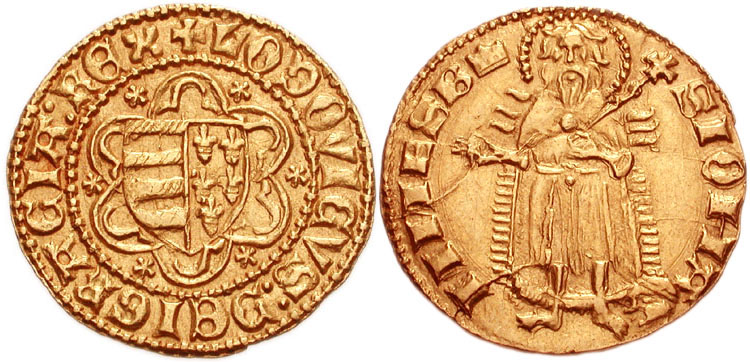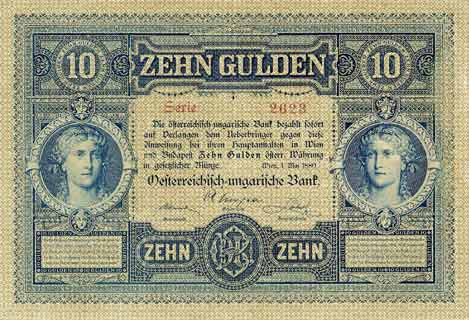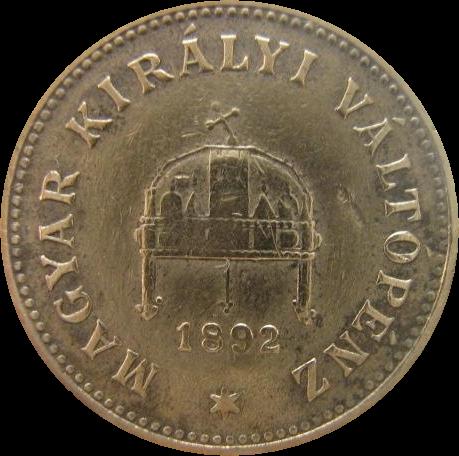|
Forint
The forint (sign Ft; code HUF) is the currency of Hungary. It was formerly divided into 100 fillér, but fillér coins are no longer in circulation. The introduction of the forint on 1 August 1946 was a crucial step in the post-World War II stabilisation of the Hungarian economy, and the currency remained relatively stable until the 1980s. Transition to a market economy in the early 1990s adversely affected the value of the forint; inflation peaked at 35% in 1991. Between 2001 and 2022, inflation was in single digits, and the forint has been declared fully convertible. In May 2022, inflation reached 10.7% amid the war in Ukraine and economic uncertainty. As a member of the European Union, the long-term aim of the Hungarian government may be to replace the forint with the euro, although under the current government there is no target date for adopting the euro. History The forint's name comes from the city of Florence, where gold coins called '' fiorino d'oro'' were minted from ... [...More Info...] [...Related Items...] OR: [Wikipedia] [Google] [Baidu] |
Economy Of Hungary
The economy of Hungary is a high-income mixed economy, ranked as the 9th most complex economy according to the Economic Complexity Index. Hungary is a member of the Organisation for Economic Co-operation and Development (OECD) with a very high human development index and a skilled labour force, with the 13th lowest income inequality in the world. The Hungarian economy is the 54th-largest economy in the world (out of 188 countries measured by IMF) with $265.037 billion annual output, and ranks 41st in the world in terms of GDP per capita measured by purchasing power parity. Hungary has an export-oriented market economy with a heavy emphasis on foreign trade; thus the country is the 35th largest export economy in the world. The country had more than $100 billion of exports in 2015, with a high trade surplus of $9.003 billion, of which 79% went to the European Union (EU) and 21% was extra-EU trade. Hungary's productive capacity is more than 80% privately owned, with 39.1% ov ... [...More Info...] [...Related Items...] OR: [Wikipedia] [Google] [Baidu] |
Hungarian Pengő
The pengő (; sometimes written as ''pengo'' or ''pengoe'' in English) was the currency of Kingdom of Hungary (1920–46), Hungary between 1 January 1927, when it replaced the Hungarian korona, korona, and 31 July 1946, when it was replaced by the Hungarian forint, forint. The pengő was subdivided into 100 fillér. Although the introduction of the pengő was part of a post-World War I stabilisation program, the currency survived for only 20 years and experienced the most serious case of hyperinflation ever recorded. Name The Hungarian participle ''pengő'' means 'ringing' (which in turn derives from the verb ''peng'', an Onomatopoeia, onomatopoeic word equivalent to English 'ring') and was used from the 15th to the 17th century to refer to silver coins making a ringing sound when struck on a hard surface, thus indicating their precious metal content. (The onomatopoeic word used for gold coins is ''csengő'', an equivalent of English 'clinking' meaning a sharper sound; the particip ... [...More Info...] [...Related Items...] OR: [Wikipedia] [Google] [Baidu] |
Hungary And The Euro
While the Hungarian government has been planning since 2003 to replace the Hungarian forint with the euro, , there is no target date and the forint is not part of the European Exchange Rate Mechanism (ERM II). An economic study in 2008 found that the adoption of the euro would increase foreign investment in Hungary by 30%, although current governor of the Hungarian National Bank and former Minister of the National Economy György Matolcsy said they did not want to give up the country's independence regarding corporate tax matters. Adopting the euro Under the socialist governments between 2002 and 2010 Hungary originally planned to adopt the euro as its official currency in 2007 or 2008. Later 1 January 2010 became the target date, but that date was abandoned because of an excessively high budget deficit, inflation, and Government debt, public debt. For years, Hungary could not meet any of the Maastricht criteria. After the 2006 election, Prime Minister Ferenc Gyurcsány introduc ... [...More Info...] [...Related Items...] OR: [Wikipedia] [Google] [Baidu] |
Hungarian National Bank
The Hungarian National Bank ( hu, Magyar Nemzeti Bank (MNB)) is the central bank of Hungary and as such part of the European System of Central Banks (ESCB). The Hungarian National Bank was established in 1924 and succeeded the Royal Hungarian State Bank, which introduced the Hungarian forint on 1 August 1946. The Hungarian National Bank lays special emphasis on its international relations and on participation in the professional forums of international economic institutions and financial organisations (EU, IMF, OECD, BIS). Its principal aim is price stability, but it is also responsible for issuing the national currency, the forint, controlling the money in circulation, setting the Central Bank base rate, publishing official exchange rates, and managing the foreign-exchange reserves and gold to influence exchange rates. Operations The Governor of the Hungarian National Bank is appointed by the President of Hungary at the proposal of the Prime Minister for a six-year term. The ... [...More Info...] [...Related Items...] OR: [Wikipedia] [Google] [Baidu] |
Austro-Hungarian Florin
The florin (german: Gulden, hu, forint, hr, forinta/florin, cs, zlatý) was the currency of the lands of the House of Habsburg between 1754 and 1892 (known as the Austrian Empire from 1804 to 1867 and the Austro-Hungarian Monarchy after 1867), when it was replaced by the Austro-Hungarian crown as part of the introduction of the gold standard. In Austria, the florin was initially divided into 60 kreutzers (german: Kreuzer, hu, krajcar, hr, krajczár cs, krejcar). The currency was decimalized in 1857, using the same names for the unit and subunit. Name The name ''Gulden'' was used on the pre-1867 Austrian banknotes and on the German language side of the post-1867 banknotes. In southern Germany, the word Gulden was the standard word for a major currency unit. After 1867 Austrian coins used the name ''Florin''. "Florin" is derived from the city of Florence, Italy where the first florins were minted, from 1252 to 1533. History The florin (German: ''Gulden'') first emerged as a ... [...More Info...] [...Related Items...] OR: [Wikipedia] [Google] [Baidu] |
Long And Short Scale
The long and short scales are two of several naming systems for integer powers of ten which use some of the same terms for different magnitudes. For whole numbers smaller than 1,000,000,000 (109), such as one thousand or one million, the two scales are identical. For larger numbers, starting with 109, the two systems differ. For identical names, the long scale proceeds by powers of one million, whereas the short scale proceeds by powers of one thousand. For example, in the short scale, "one billion" means one thousand millions (1,000,000,000), whereas in the long scale, it means one million millions (1,000,000,000,000). For interleaved values, the long scale system employs additional terms, typically substituting the word ending -ion for -iard. Some languages, particularly in East Asia and South Asia, have large number naming systems that are different from both the long and short scales, such as Chinese, Japanese or Korean numerals, and the Indian numbering system. Much ... [...More Info...] [...Related Items...] OR: [Wikipedia] [Google] [Baidu] |
Fillér
''Fillér'' () was the name of various small-denomination coins throughout Hungarian history. It was the subdivision of the Austro-Hungarian and the Hungarian korona, the pengő and the forint. The name derives from the German word (four). Originally it was the name of the four-kreuzer coin. Due to significant inflation that took place after the fall of communism, fillér coins are no longer in circulation. The last fillér coin, worth 50 fillér (0.5 forint) was removed from circulation in 1999. However, it continues to be used in calculations, for example in the price of petrol (e.g. 479.9 forint/litre), or in the prices of telephone calls. See also * Coins of the Austro-Hungarian krone * Coins of the Hungarian pengő * Coins of the Hungarian forint Hungarian forint coins ( hu, forint érmék) are part of the physical form of current Hungarian currency, the Hungarian forint. Modern forint coins (this name is used to distinguish them from pre-20th century forint coinage) ... [...More Info...] [...Related Items...] OR: [Wikipedia] [Google] [Baidu] |
Florin
The Florentine florin was a gold coin struck from 1252 to 1533 with no significant change in its design or metal content standard during that time. It had 54 grains (3.499 grams, 0.113 troy ounce) of nominally pure or 'fine' gold with a purchasing power difficult to estimate (and variable) but ranging according to social grouping and perspective from approximately 140 to 1,000 modern US dollars. The name of the coin comes from the ''Giglio bottonato'' ( it), the floral emblem of the city, which is represented at the head of the coin. History The ''fiorino d'oro'' (gold florin) was used in the Republic of Florence and was the first European gold coin struck in sufficient quantities since the 7th century to play a significant commercial role. The florin was recognized across large parts of Europe. The territorial usage of the '' lira'' and the florin often overlapped, where the lira was used for smaller transactions (wages, food purchases), the florin was for larger transactions ... [...More Info...] [...Related Items...] OR: [Wikipedia] [Google] [Baidu] |
Hungary
Hungary ( hu, Magyarország ) is a landlocked country in Central Europe. Spanning of the Carpathian Basin, it is bordered by Slovakia to the north, Ukraine to the northeast, Romania to the east and southeast, Serbia to the south, Croatia and Slovenia to the southwest, and Austria to the west. Hungary has a population of nearly 9 million, mostly ethnic Hungarians and a significant Romani minority. Hungarian, the official language, is the world's most widely spoken Uralic language and among the few non-Indo-European languages widely spoken in Europe. Budapest is the country's capital and largest city; other major urban areas include Debrecen, Szeged, Miskolc, Pécs, and Győr. The territory of present-day Hungary has for centuries been a crossroads for various peoples, including Celts, Romans, Germanic tribes, Huns, West Slavs and the Avars. The foundation of the Hungarian state was established in the late 9th century AD with the conquest of the Carpathian Basin by Hungar ... [...More Info...] [...Related Items...] OR: [Wikipedia] [Google] [Baidu] |
Charles I Of Hungary
Charles I, also known as Charles Robert ( hu, Károly Róbert; hr, Karlo Robert; sk, Karol Róbert; 128816 July 1342) was King of Hungary and Croatia from 1308 to his death. He was a member of the Capetian House of Anjou and the only son of Charles Martel, Prince of Salerno. His father was the eldest son of Charles II of Naples and Mary of Hungary. Mary laid claim to Hungary after her brother, Ladislaus IV of Hungary, died in 1290, but the Hungarian prelates and lords elected her cousin, Andrew III, king. Instead of abandoning her claim to Hungary, she transferred it to her son, Charles Martel, and after his death in 1295, to her grandson, Charles. On the other hand, her husband, Charles II of Naples, made their third son, Robert, heir to the Kingdom of Naples, thus disinheriting Charles. Charles came to the Kingdom of Hungary upon the invitation of an influential Croatian lord, Paul Šubić, in August 1300. Andrew III died on 14 January 1301, and within four mon ... [...More Info...] [...Related Items...] OR: [Wikipedia] [Google] [Baidu] |
Hyperinflation
In economics, hyperinflation is a very high and typically accelerating inflation. It quickly erodes the real value of the local currency, as the prices of all goods increase. This causes people to minimize their holdings in that currency as they usually switch to more stable foreign currencies. When measured in stable foreign currencies, prices typically remain stable. Unlike low inflation, where the process of rising prices is protracted and not generally noticeable except by studying past market prices, hyperinflation sees a rapid and continuing increase in nominal prices, the nominal cost of goods, and in the supply of currency. Typically, however, the general price level rises even more rapidly than the money supply as people try ridding themselves of the devaluing currency as quickly as possible. As this happens, the real stock of money (i.e., the amount of circulating money divided by the price level) decreases considerably.Bernholz, Peter 2003, chapter 5.3 Almost all ... [...More Info...] [...Related Items...] OR: [Wikipedia] [Google] [Baidu] |
European Union
The European Union (EU) is a supranational political and economic union of member states that are located primarily in Europe. The union has a total area of and an estimated total population of about 447million. The EU has often been described as a '' sui generis'' political entity (without precedent or comparison) combining the characteristics of both a federation and a confederation. Containing 5.8per cent of the world population in 2020, the EU generated a nominal gross domestic product (GDP) of around trillion in 2021, constituting approximately 18per cent of global nominal GDP. Additionally, all EU states but Bulgaria have a very high Human Development Index according to the United Nations Development Programme. Its cornerstone, the Customs Union, paved the way to establishing an internal single market based on standardised legal framework and legislation that applies in all member states in those matters, and only those matters, where the states have agreed to act ... [...More Info...] [...Related Items...] OR: [Wikipedia] [Google] [Baidu] |









